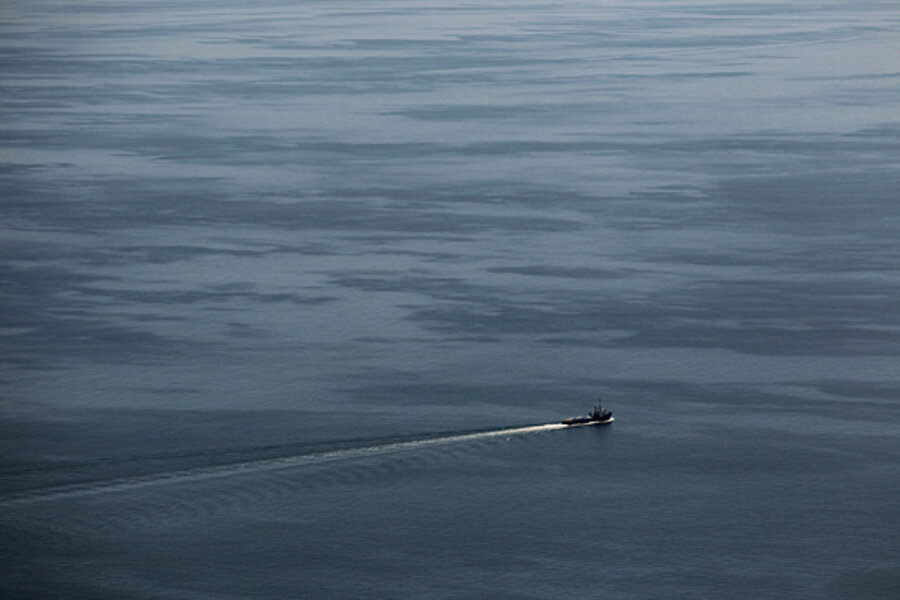Why the well in Gulf oil spill is no longer a threat
Loading...
After months of defying repeated attempts to subdue it, the well at the center of the Gulf oil spill capitulated quietly Wednesday morning, with BP’s “static kill” forcing the oil back into its underground lair.
BP pumped 2,000 barrels (84,000 gallons) of synthetic drilling mud into the well, beginning Tuesday night. That column of mud – weighing 13 pounds a gallon – now sits atop the oil beneath it. The system is in a static state, meaning that the downward weight of the mud is counterbalancing the pressure of the oil pushing upward from the reservoir.
In other words, nothing is moving – the thing BP has been trying to achieve virtually from the moment in late April that it realized it had a mile-deep undersea oil geyser on its hands.
President Obama called it a "significant milestone."
"We've pretty much made this well not a threat," added Mr. Obama's man in charge of the relief effort, retired Coast Guard Adm. Thad Allen.
The mud will hold the oil in place like a gigantic synthetic thumb until a relief well can puncture the leaking well down near the reservoir and fill it with cement in mid-August.
For redundancy’s sake, engineers might choose to pour in concrete from the top during the next few days to be doubly sure the well is sealed. That decision could be made Wednesday.
The success of static kill was, in itself, no great technological feat. Rather, it was confirmation that the placing of the containment cap atop the well on July 15 was the turning point in the battle to stem the gusher.
For all intents and purposes, static kill was precisely the same procedure as “top kill,” which failed in late May. The important difference what that oil was still venting from the well in May, and static kill could never get on top of the oil to push it down.
With the cap, it did so with ease. BP said static kill could take 33 to 61 hours. It took eight.
What remains is cementing the well. To do this, BP needs to cement not only the inner pipe through which the oil flows, but also the space that exists between that pipe and the outer wall of the well bore, called the annulus.
If BP chooses to pour cement down the well, it is unclear at this hour whether it would merely be cementing the pipe or whether that cement could also make its way into the annulus to seal it.
The relief well could confirm if the cementing job worked, and do the job properly if it didn’t.
Conversely, engineers could decide simply to wait and do all the cementing through the relief well.
The well will not be officially killed until it is cemented far down near the reservoir.
Related:





